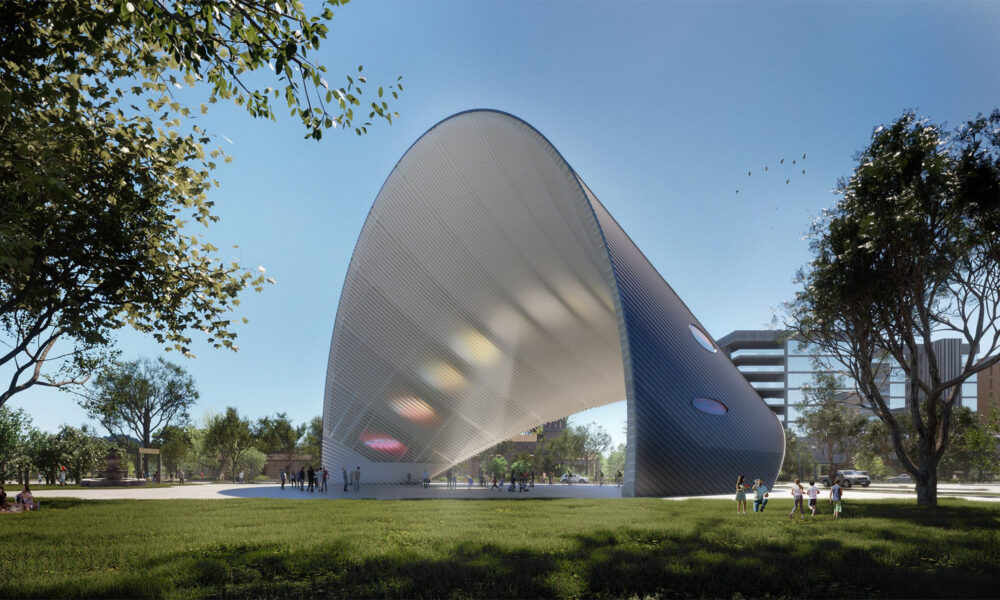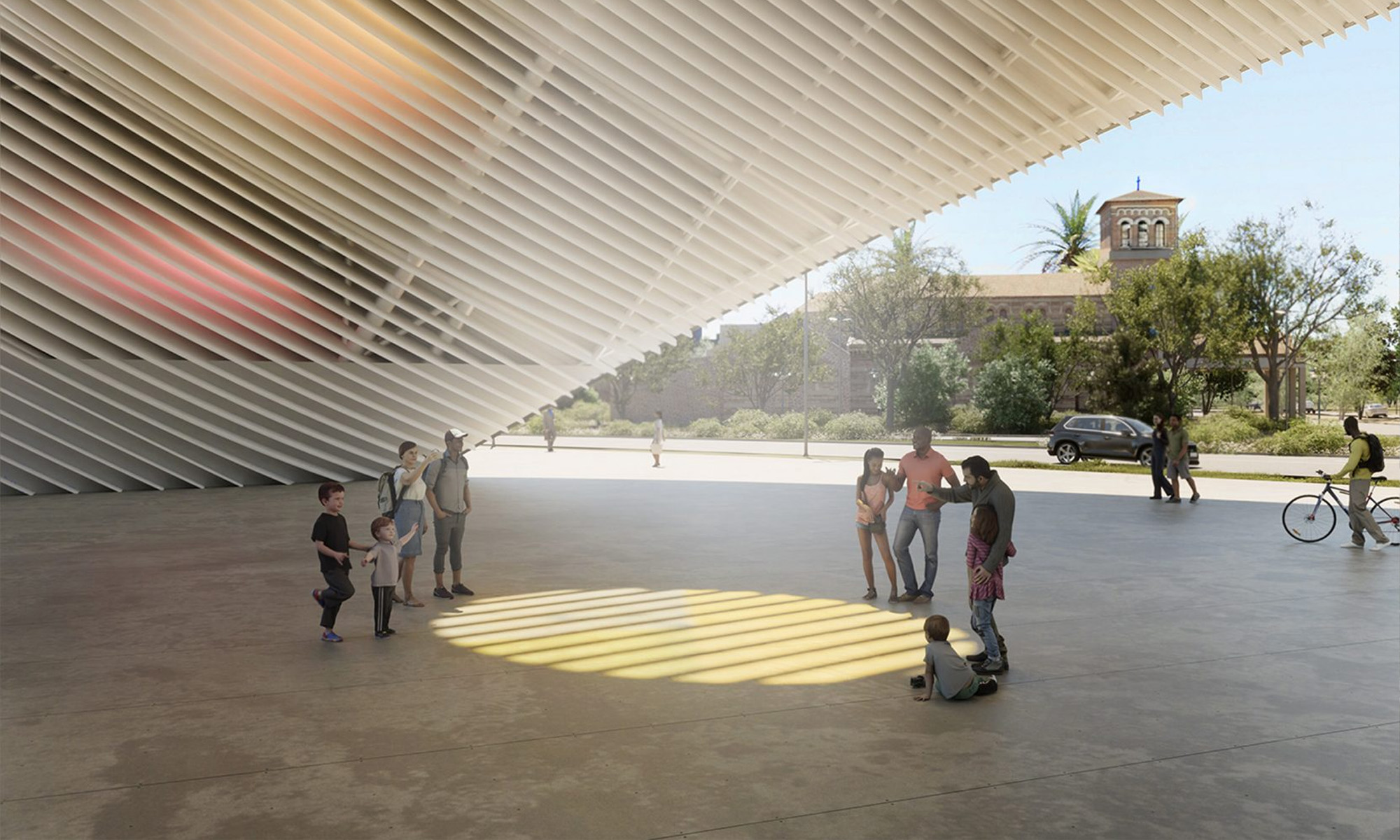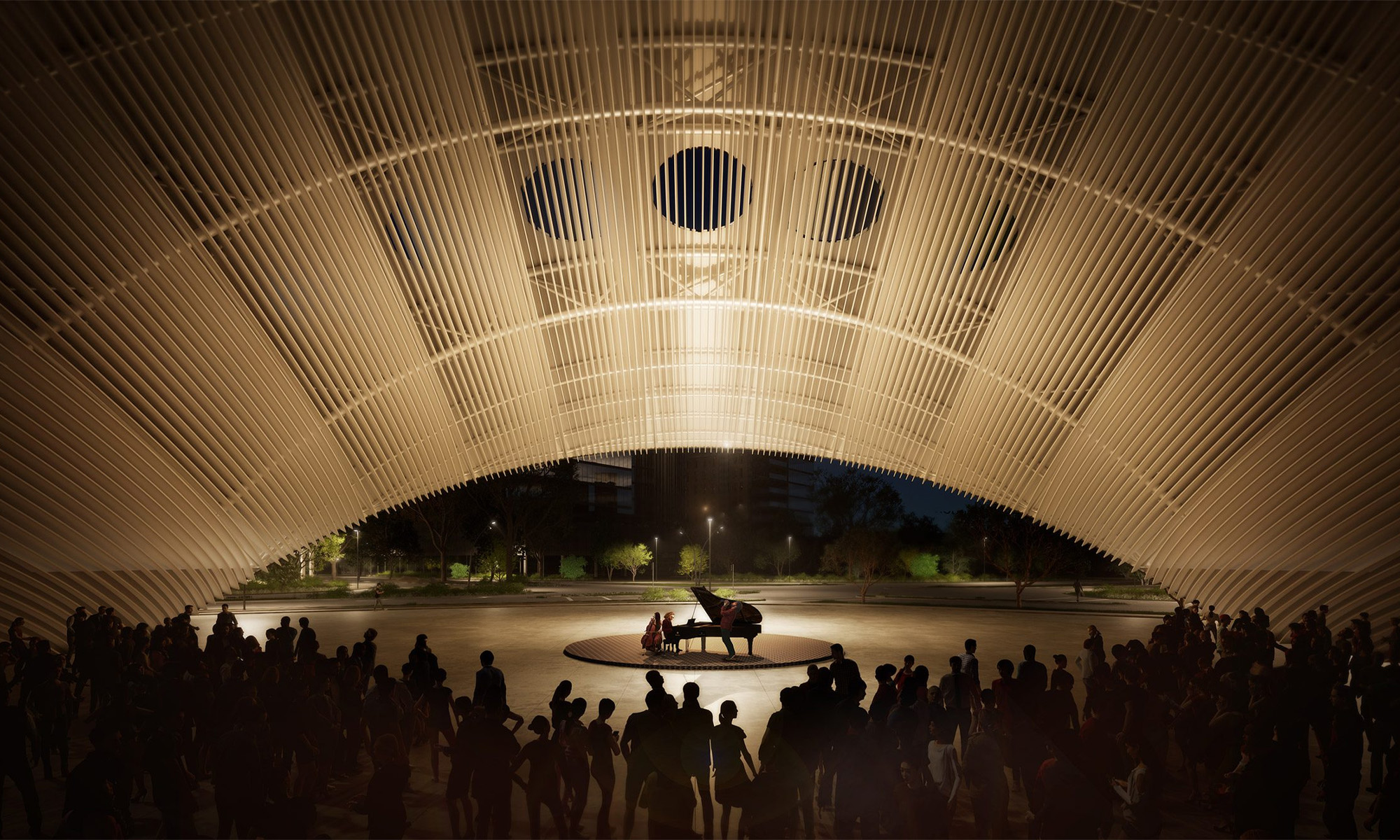News
Abu Dhabi-Backed Tech Sculpture To Be Installed In Houston
Created for the LAGI 2019 design competition in Abu Dhabi, the high-tech installation will double as a renewable power plant.

“The world’s largest sundial”, designed by Berlin architect Riccardo Mariano, is set to be installed in the city of Houston, Texas, in the city’s East End neighborhood in 2024.
The project was made possible by the Land Art Generator Initiative partnership with Masdar City, an Abu Dhabi urban development dedicated to creating sustainable cities and lifestyles. For those unaware, Houston, Texas, is twinned with the capital of the United Arab Emirates, hence the connection.

The 30-meter-tall sundial will be known as the Arco del Tiempo (Arch of Time) and functions as an interactive clock, casting sunlight onto the surface of Guadalupe Plaza Park. The installation’s geometry, carefully designed according to Houston’s latitude and longitude, is accurate throughout the seasons and hours of the day.

However, the Arco del Tiempo is far more than just a sculpture. The project will also serve as a renewable energy power generation plant. The finished arch will incorporate solar modules on its south-facing side, generating around 400 megawatt-hours of electricity annually — the equivalent energy consumption of 40 local homes.
Also Read: Kuwait Bans Cryptocurrencies, Putting An End To Virtual Assets
“It was a pleasure to be part of the LAGI competition in 2019, and we’re very excited to see the winning entry come to life—particularly in Abu Dhabi’s sister city,” said Chris Wan, Associate Director of Sustainability and Corporate Social Responsibility at Masdar City. “We know that public art plays a significant role in the fabric of a city, and Arco del Tiempo is so much more than public art: it will also educate the public about sustainability while celebrating and advocating for it. It’s a powerful combination. I hope to see more art like it in the cities of the future”.
Over its lifetime, the Arco del Tiempo is projected to generate over 12 million kilowatt-hours of renewable energy, effectively removing 8,500 metric tons of CO2.